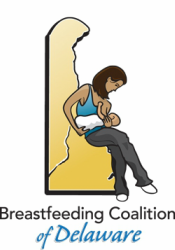Resources for Returning to Work
Workplace Guide: Rights of Breastfeeding Employees
Guides are being developed for legislation in 28 states, DC, Guam, and Puerto Rico. They will be published in the Online Guide: What You Need to Know About the “Break Time for Nursing Mothers” Law section “What if your state already has a law?” Each state has a webpage featuring a web version and downloadable PDF of the Guide to the Rights of Breastfeeding Employees, which provides an overview of laws that impact breastfeeding employees in each state.
See the Guide to the Rights of Breastfeeding Employees in Delaware and Talking to Your Boss About Your Pump - Delaware.
See the Guide to the Rights of Breastfeeding Employees in Delaware and Talking to Your Boss About Your Pump - Delaware.
